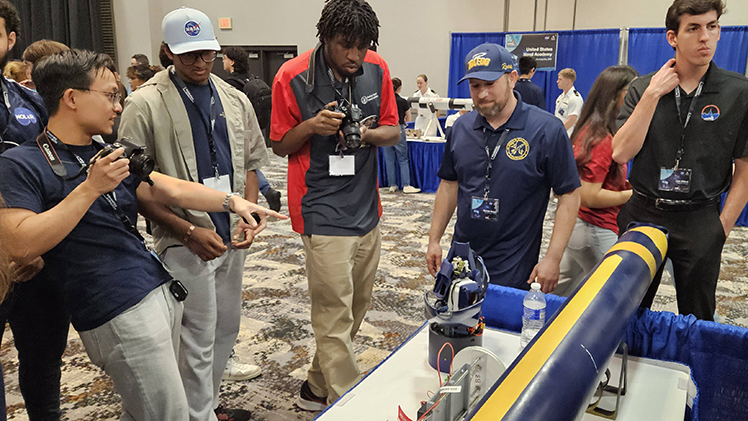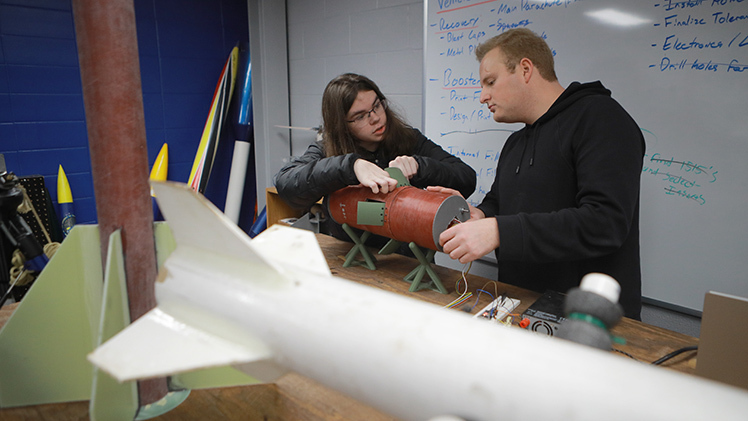Even a crash landing couldn’t keep them down.
When The University of Toledo Rocketry Club competed in NASA’s 25th annual Student Launch Challenge in late April and early May, a twisted parachute grounded their rocket ahead of its final launch. But they were excited to walk away with the NASA Artemis Student Challenge Innovation Award, recognizing the design of the scientific payload system that they call the E.P.I.C. Payload Capsule.

Mike Vargas, a master’s student in mechanical engineering, discusses the innovative payload system that he and his peers designed during the Rocket Fair event at the 2025 NASA Student Launch Challenge.
E.P.I.C. standing for Electronics Plus Internal Cooling.
“It’s like winning the Super Bowl,” said Mike Vargas, a master’s student in mechanical engineering who led his peers in the design and execution of the payload system. “It feels like we’re the national champions at making payloads. We were competing against the top schools in the country, and we had the most innovative design.”
The NASA Student Launch Challenge tasks student teams across the country with designing, building, testing and launching a high-powered rocket carrying a scientific or engineering payload. It’s an intensive nine-month process, with teams required to submit formal reports and presentations along the way, and it culminates in a national competition outside Huntsville, Alabama.
NASA tweaks the criteria for the rocket and payload each year, with this year’s teams challenged to design a payload capable of sending at least three data points from their rockets to a ground-based mission control.
Vargas and his teammates went above and beyond with a capsule capable of reporting all eight suggested data points. Inspired by SpaceX’s Dragon spacecrafts, it opens both vertically and horizontally to allow full-circle access to internal electronics, including sensors and high-resolution cameras that record data like apogee and velocity; a cooling system that ensures everything functions as designed; and an omnidirectional antenna and radio transmitter that allows them to report their data points to mission control.

Matthew Lomax, then a mechanical engineering freshman, and Brody Greenwood, then a mechanical engineering senior, tinker with the design of their rocket ahead of the 2025 NASA Student Launch Challenge.
Data is reported via voice transmission, rather than the simpler Morse code, Vargas noted.
“The voice transmission is pretty significant,” he said. “It really took a lot of time to develop the hardware and the programming to convert our data into voice transmission.”
The club recently received their NASA Artemis Student Challenge Innovation Award, which includes a flag flown aboard the Artemis 1 mission in 2022. It’s now proudly displayed inside their workspace in the North Engineering Building.
“I wish that our rocket would have qualified and that we could have had a shot at winning the whole thing, because we really had an amazing team this year,” said Vargas, who will lead the team as president in the 2025-26 academic year. “But we still were able to go to the competition. We still were able to work together and learn new things. This has been the most valuable hands-on experience I’ve had so far at UToledo.”